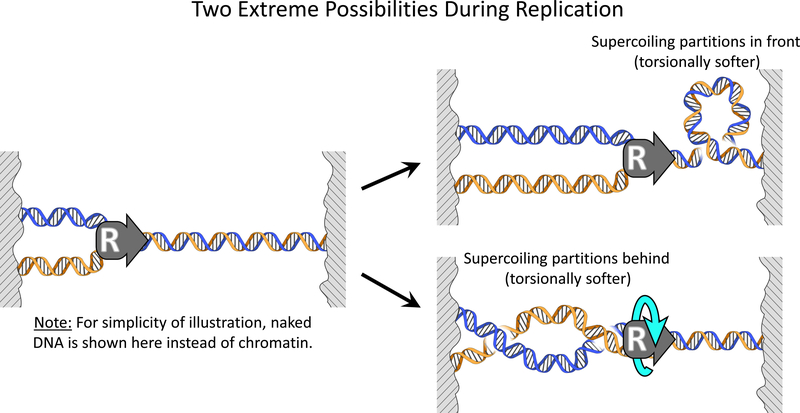Figure 1.
Torsional stiffness of the chromatin substrates dictates supercoiling partitioning during DNA replication. For simplicity of illustration, naked DNA is shown here instead of chromatin. During replication, torque is balanced on both sides of the replisome and thus supercoiling partitions based on the ratio of the torsional stiffness of the substrate in front of the replisome to that of the substrate behind the replisome. Shown are two extreme possibilities of partitioning. If the torsional stiffness of the single substrate in front of the replisome is much smaller, replisome rotation is minimal and supercoiling partitions primarily to the front. On the other hand, if the torsional stiffness of the braided substrate behind the replisome is much smaller, the replisome rotates extensively and supercoiling partitions primarily to behind the replisome.

